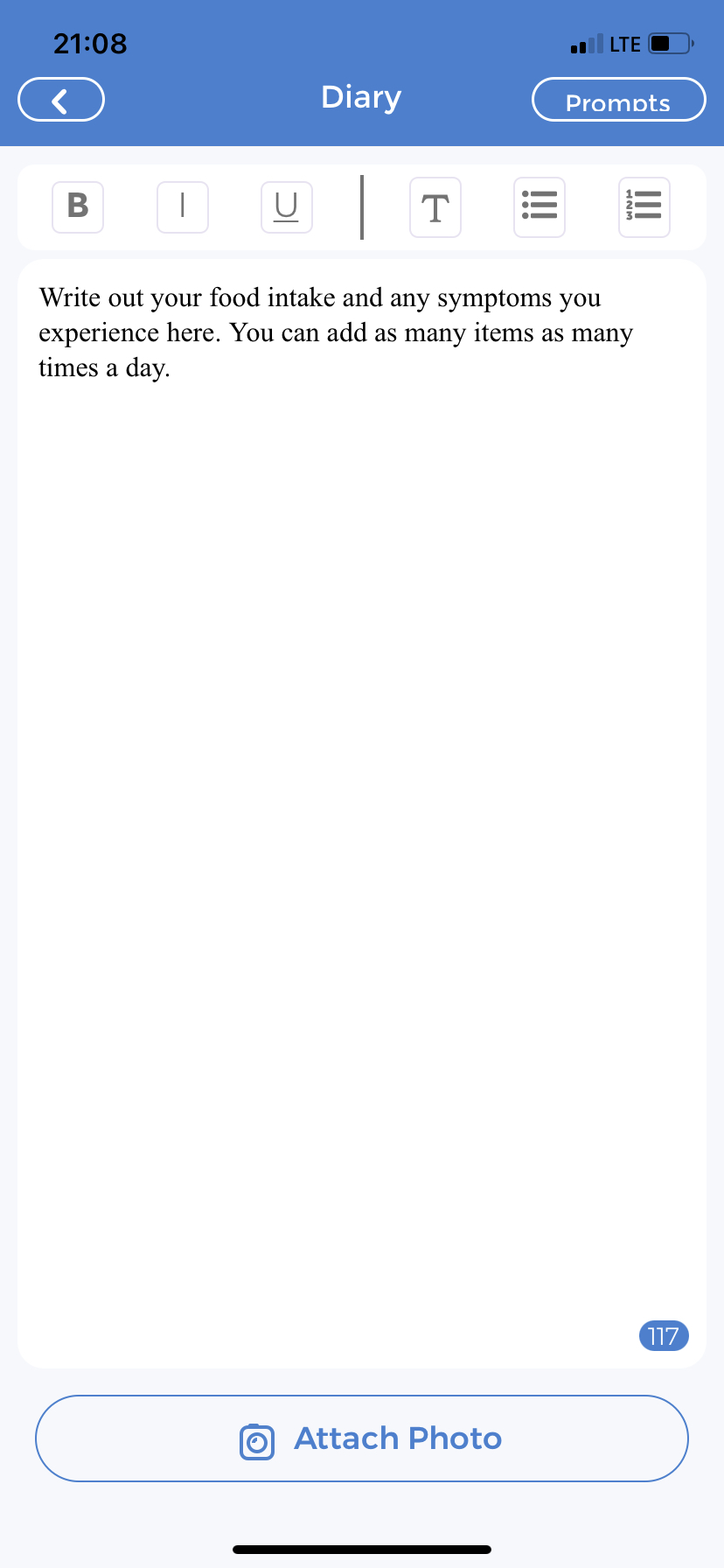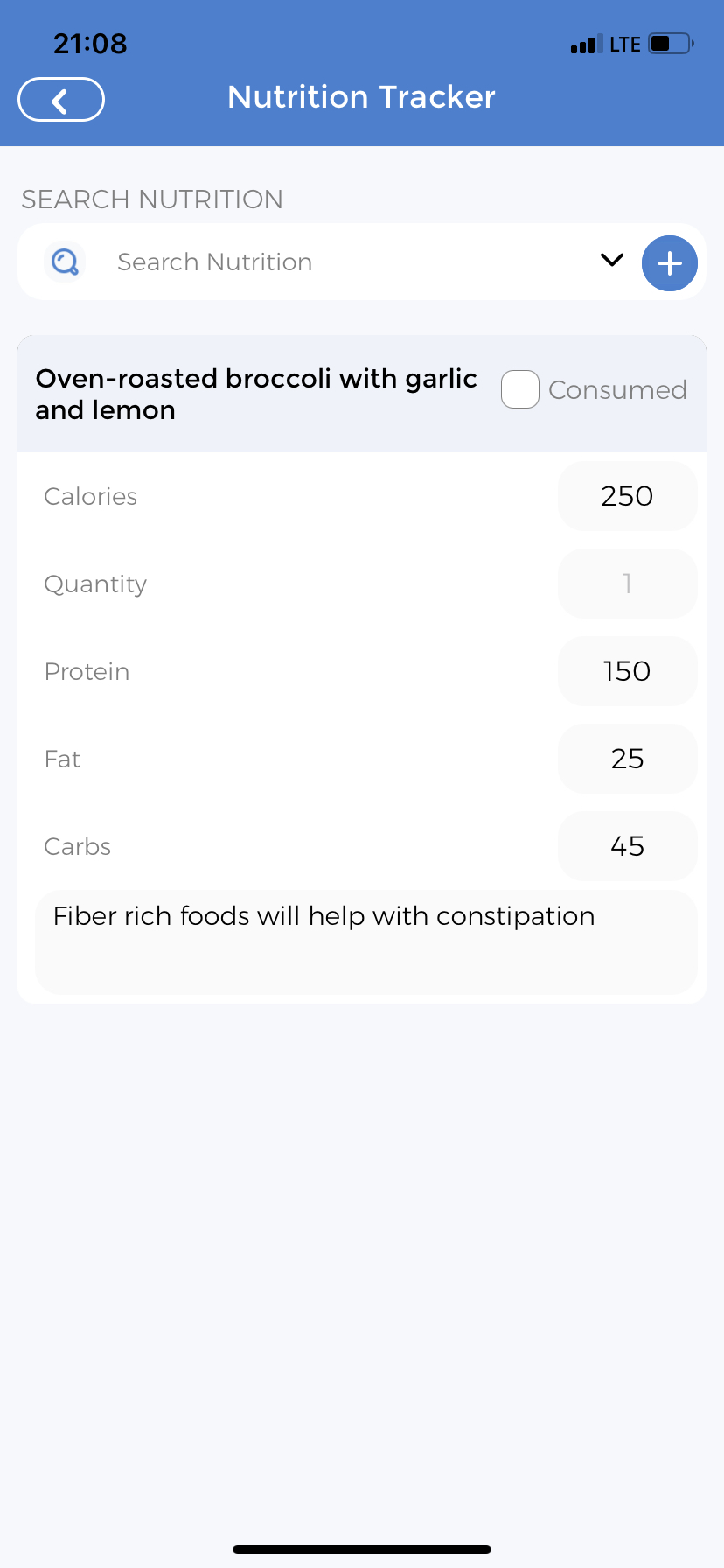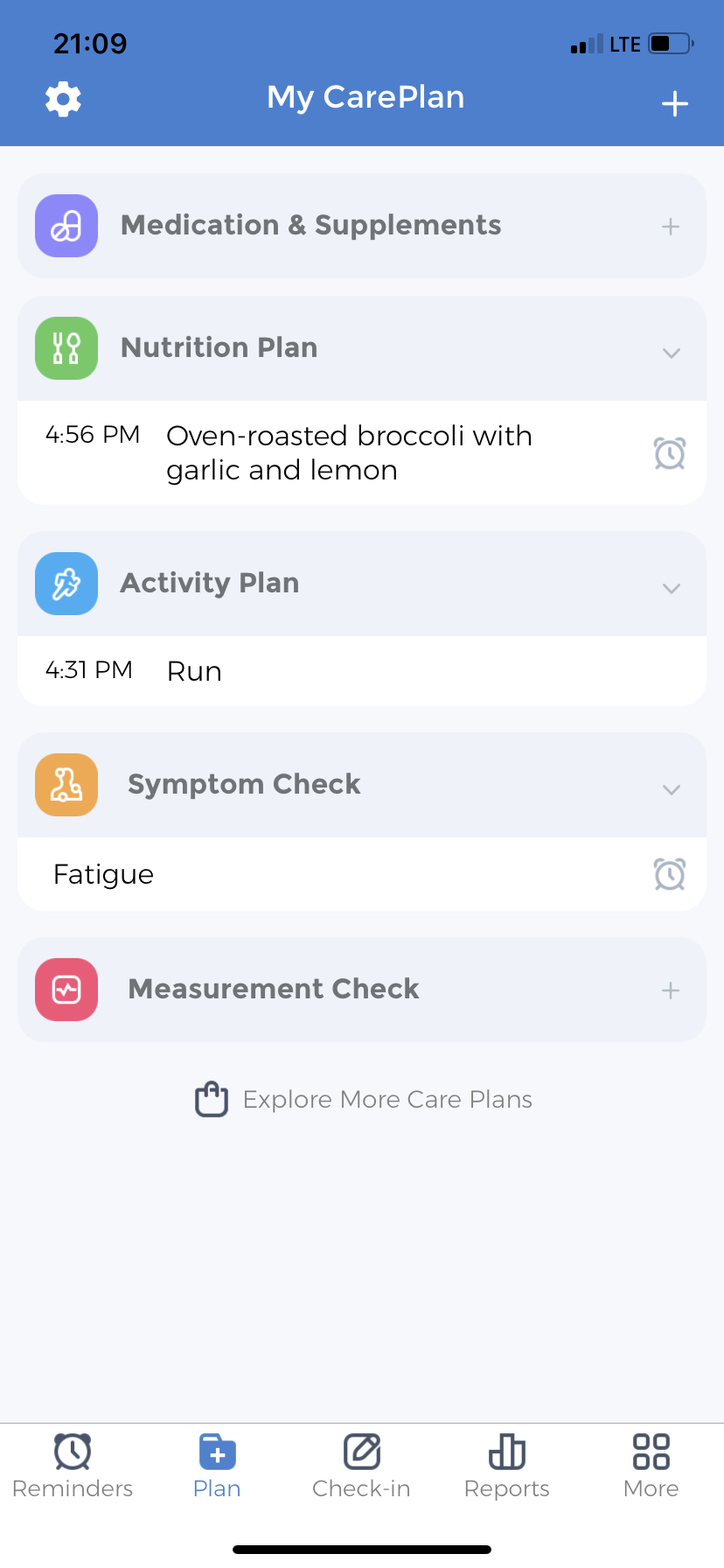
The healthcare industry understands the importance of health tracking and preventive medication. It is better to think about your health today rather than feeling bad tomorrow. The best part is you can help yourself by keeping your vitals in control. This will help you progress better. The best way to do this is through a Crohn’s Food Diary.
Along with preventive medication, another practice in the medical industry suggested by professionals is a symptom or treatment tracking. It is all about keeping an eye on what symptoms or diseases you have and how you react to them.
Observation and examination are two important parts of the treatment. For a doctor, it is not possible to examine a person every day or keep the patient under observation until the treatment is done. They have to let patients go home and live in normal space. However, there is another way to keep track of a patient’s activities and treatment reactions and that is through logs, diaries or ledgers.
By using the health tracking logs for different diseases or conditions, professionals are able to track patient conditions in intervals. This prevents the constant need for doctor’s visits.
Table of Contents
- What is Crohn’s Disease?
- How Does a Person Develop Crohn’s Disease?
- What are the Symptoms of Crohn’s Disease?
- Complications of Crohn’s Disease
- Different Types of Crohn’s Disease
- What is a Crohn’s Food Diary?
- Setting Up a Crohn’s Food Diary
- How Does a Dairy Affect Crohn’s Disease?
- Using a Crohn’s Food Diary
- Things to Avoid While Filling a Crohn’s Food Diary
- Frequently Asked Questions on the Crohn’s Food Diary
- Digital Health Assistance for Crohn’s Disease
- All in One Digital Health Solution
What is Crohn’s Disease?
Crohn’s Disease is an inflammatory bowel disease that causes chronic inflammation of the gastrointestinal tract. It is a chronic disease and can affect any part of the gastrointestinal tract. The gastrointestinal tract runs from the mouth to the anus. Most commonly it affects the small bowel or the ileum, and the beginning of the colon. Crohn’s Disease affects men and women equally and most often occurs between the ages of 20 and 30.
How Does a Person Develop Crohn’s Disease?
A person’s immune system attacks and kills foreign invaders like bacteria, viruses, fungi, and other microorganisms. Harmless bacteria that are present in the GI tract are protected from an immune system attack. With Crohn’s Disease, these harmless bacteria are mistaken for foreign invaders and the immune system attacks them. There are multiple factors that contribute to this:
Genetics
Between 5% and 20% of people with IBD, specifically, Crohn’s disease, have a first-degree relative, such as a parent, child, or sibling, who also has one of the diseases. The risk is significantly higher when both parents have an IBD of any kind. Crohn’s disease usually affects Caucasian people, most specifically those of European descent.
Environment
- The environment can play a part in developing IBD and Crohn’s disease. Crohn’s disease is more likely found in:
- Developed countries, rather than undeveloped countries
- Urban cities and towns, rather than rural areas
- Northern climates, rather than southern climates
What are the Symptoms of Crohn’s Disease?
Patients will likely experience periods when symptoms are active, known as flares, followed by periods of remission when you may not notice any symptoms at all. Having said that, it is important to know the most common symptoms to look out for. All these symptoms point to an inflamed gastrointestinal tract:
- Persistent diarrhea
- Rectal bleeding
- Urgent need to move bowels
- Abdominal cramps and pain
- A sensation of incomplete bowel evacuation
- Constipation, which can lead to bowel obstruction
Outside the gastrointestinal tract, there are other symptoms to look out for. The most common of those are:
- Redness or pain in the eyes, or vision changes
- Mouth sores
- Swollen and painful joints
- Skin complications, such as bumps, sores, or rashes
- Fever
- Loss of appetite
- Weight Loss
- Fatigue
Complications of Crohn’s Disease
In more severe cases Crohn’s disease will also lead to:
- Fissures – tears in the lining of the anus, which can cause pain and bleed especially during bowel movements.
- Fistula – an abnormal channel that forms between one part of the intestine and another, or between the intestine and the bladder, vagina, or skin. Fistulas are most common in the anal area and require immediate medical attention.
- Stricture – narrowing of the intestine as a result of chronic inflammation.
Different Types of Crohn’s Disease
Ileitis – it only affects the ileum.
Symptoms include:
- Diarrhea and cramping
- Pain in the middle or lower right part of the abdomen
- Significant weight loss
- In severe cases, complications may include fistulas or inflammatory abscesses in the right lower quadrant of the abdomen
Ileocolitis – is the most common form of Crohn’s disease. The symptoms are the same as those of ileitis. It affects the small intestine, known as the terminal ileum, and the large intestine also called the colon.
Gastroduodenal Crohn’s Disease – This type affects the stomach and the beginning of the small intestine, called the duodenum.
Symptoms may include:
- Nausea
- Vomiting
- Loss of appetite
- Weight loss
Jejunoileitis – This type is characterized by patchy areas of inflammation in the upper half of the small intestine, called the jejunum.
Symptoms include:
- Mild to intense abdominal pain and cramps following meals
- Diarrhea
- Fistulas may form in severe cases or after prolonged periods of inflammation
Crohn’s (granulomatous) colitis – This type affects only the colon, also known as the large intestine.
Symptoms include:
- Diarrhea
- Rectal bleeding
- Disease around the anus, including abscess, fistulas and ulcers
- Skin lesions and joint pains are more common in this form of Crohn’s than in others
What is a Crohn’s Food Diary?
A Crohn’s food diary is a health-tracking or treatment-tracking diary. It helps keep track of what you eat, the nutrition value and the quantity of food, daily. Having Crohn’s disease means you have a bad inflammation in the digestive tract. There can be numerous reasons for this however food imbalance is an integral part of the disease.
Advanced stages of the problem can lead to issues such as fatigue, abdomen pain, weight loss, diarrhea and malnutrition. While medications can help make you feel better, keeping track of your diet and changing food when necessary can help in quick recovery. Many professionals also believe that food alternatives are better than medicines.
They suggest you curate a balanced diet with specific food intake and restrictions. How can you do this effectively? Through the Crohn’s food diary. It helps you keep your eating habits in check and can be tracked through daily entries. Moreover, it can help with mood tracking as well as any reactions you may have to changes in your nutrition plan. This is a great way to understand how something you ate reacts in your digestive system.
Beyond tracking food triggers, managing your condition takes more than just diet changes. Good crohn’s disease self-care includes sleep habits, stress management, and staying active when you can. These daily practices work together with your food diary to help you feel better.
Crohn’s disease can also be a by-product of food allergies and unwanted reactions, therefore, the food ledger will help filter what you have eaten, how you have reacted to it and create an understanding of what foods you should avoid.
Setting Up a Crohn’s Food Diary
A Crohn’s food diary is different from any regular diary that you use to make a note or keep track of your routine. It is essential to understand that every tracking diary and ledger has a specific format. The more closely you follow the format, the more effective the tracking will be.
Structure of the Diary
The Crohn’s food diary contains different sheets made with tables and specific columns and rows. This structure lets you note down everything appropriately and easily. Ensure you fill out each section as accurately as possible. The date and time are also essential to mention to track certain times of the day and how your body reacts to food intakes. Similarly, time of day can also have an effect on how well food is digested so be sure to track that accurately.
Mealtime Column Section
In this column, you will get an option for breakfast, mid-day snacks, lunch, and dinner. There is a section where you can add snacks as well. Since snacks are so individualized, a Crohn’s diary does not generally come with a pre-assigned column for it. Remember to mention the time of day you ate, what you ate and the quantity you consumed of each item.
Food Option Section
This is the column in which you categorize your meals and find exactly what was eaten. For the most accurate tracking, you will need to add in macro and micronutrients for each food item. For instance, for breakfast, you add your contents of milk, cereals, pancakes etc. Along with the item, you add calories, fats, carbohydrates and proteins for each item. Finding food by cuisine is generally easier for tracking and categorizing as a tip. Don’t forget to add in any snacks or liquids you ingest as well. This can be anything from water to alcohol, and how much of it you ingest throughout the day.
Reactions & Sensations
The next available column in the diary sheet is the reactions you are observing once you have eaten food. Do you have any pain? If so, is it painful in the abdomen, causing vomiting, severe diarrhea, digestion issues or any other symptoms? Tracking the aftermath of eating can help doctors understand how you react to food and therefore what foods you may be intolerant or allergic to.
Eventually, with the help of this record, your doctor can help guide your diet and caution you on what foods to avoid. To restrict and limit food intake, remember to separate the foods your ingest well from the problematic food options. By avoiding the problematic options you can reduce inflammation of your gut and also reduce medications you may be taking. If your diet still does not cause enough relief, medicines can work well as another option. Consult your doctor and do not self-medicate.
How Does a Dairy Affect Crohn’s Disease?
Conventionally we know the Crohn’s food diary in its paper and pen format. As the world changes and technology becomes a significantly bigger piece of our lives, we see a shift to the online versions. The online version of the diary offers quick access to the diary 24/7 off your phone, tablet or computer. They are usually editable digital sheets on your smartphone. You never have to remember what you ate and jot it down later, just take out your phone and input as you eat or feel symptoms. With the help of these paperless sheets, you can easily record all your essentials in the diary. It is also easier to share and evaluate these sheets using digital tools between doctors and patients or other caregivers.
Do it Yourself (DIY)
If you do not want to have a paid membership or subscription to any of these apps, it is possible to design one for you. Using some basic format techniques explained earlier and your document software, it is possible to have a digital sheet.
You can even include the space for the whole week or make a single sheet format for each day. It will make your record digital. Easy to share and print on demand as well. If you are good at stats and data analyzing, then running some formulas on excel will make things even more fun. You can be an analyst of your condition with this data record and make the best outcomes on demand.
Just be sure that what you are doing is according to the rules. Do not miss anything that will lose the impact.
Using a Crohn’s Food Diary
Check on the Format
The very first thing you need to check in the diary is the format. It needs to have all essential columns and blocks to fill out the information. If there are not enough options or space, you might miss some information. Moreover, you should know your requirements for space. It helps you review the kind of diary you are looking for more accurately.
Fill Up a Template
Before you get started with the Crohn’s food diary there is an option to trial a diary sheet. By filling out the trial sheet you will know whether the diary can help you fulfill your required information needs or not. Not finding the right diary on the first try does not mean you have failed. It simply means you need to keep looking till you find the perfect diary for you.
Consult with your Healthcare Provider
When things are confusing you can discuss the options for which diary to use with your healthcare provider. Doctors can offer or suggest a specific format of a Crohn’s food diary. You can use that as a starting point to build your own criteria off. Sometimes doctors can even offer you advice on which app other clients have found most helpful. Hearing someone else’s experience with the app can help you be more informed when making this decision. If nothing works out, you can always create your own diary and consult on the best format with your doctor.
Things to Avoid While Filling a Crohn’s Food Diary
When filling up the Crohn’s food diary and maintaining a record, there are things you should avoid in order to have the most accurate records possible. By not accurately reporting, you can cause problems with your treatment plan and therefore have adverse effects on your recovery.
Skipping Meal – Write all your Notes
Do not skip your meals or their notes as well. It is essential to mention everything you ate in a meal. No matter if it is in a small portion of a larger one. Keep meals as simple as possible for easy digestion. Too many ingredients at once can overload your system and make it hard to enjoy your food.
Always Mention Extra Snacks
Sometimes, you might end up having a snack during the day. Everyone does it and there is nothing to feel ashamed of if you do. It is essential to mention that snack in the Crohn’s food diary, however. Accurate representation of food will help create a better understanding of your food habits and can help your doctor come up with a suitable nutrition plan for you.
Not Observing Reactions to Food
The most important part of the diary is noting your reactions to the food you eat. Give yourself time to understand your body’s reaction to food. Sometimes you may not think you are intolerant to a particular ingredient but taking time to really listen to your body, could help save you some problems. Allergies can also form later in life so it is important to keep track of changes in reaction to ingredients. This will help you avoid those foods in the future and live more comfortably.
Trying to Suppress the Impact of Food
Sometimes, you may ignore the small reactions and brush them off as indigestion. If after having a meal or eating something specific you have mild reactions, do not suppress them. Record them because something that seems mild this week may not be mild in the future. You do not want to ignore a small problem now and have it become bigger later on.
Favoring Preferred Food Items
It is possible, for example, that you love to eat nachos with jalapeno and do not mention it in your Crohn’s food diary because it causes discomfort after ingestion. To avoid the loss of your favourite meal you will suppress the pain. Do not make this mistake. Make sure to mention everything correctly in your diary because your body is telling you it cannot handle whatever it is you are eating right now. This does not mean you will never be able to eat that substance again. Once your condition is manageable, you can reintroduce that favourite food into your diet.
Frequently Asked Questions on the Crohn’s Food Diary
Is it Necessary to Have a Paper Diary?
No, you do have options to pick up the digital diary or an app that provides you all the sections and format of Crohn’s food diary. The latest healthcare apps let you access multiple features in one place for the best outcome.
Do Digital Apps for Crohn’s Food Tracking Work Well?
Only you can answer that question. Not everyone is going to like the same app. You need to test the app you are using and if it works best for you. You can use reviews to help guide your choices but ultimately you have to decide. On the whole digital apps are workable and let you keep records easily.
Can the Crohn’s Food Diary be Used in a Normal Routine?
Yes, the use of a diary is not limited to the people suffering from Crohn’s. Anyone who wants to keep the track of eating habits and note down where things could go wrong can use it. Health is important and everyone should take care of themselves.
Is there an Alternative to the Crohn’s Food Diary?
If you want to keep track of your diet systematically, there is no alternative to it. With the help of an authentic and formatted Crohn’s food diary, you will be able to get appropriate results.
What if Doctors Do Not Suggest Using a Crohn’s Food Diary?
You do not need a doctor’s prescription to use a diary. Discuss the benefits of keeping the diary for yourself and start using one. If the doctor is unfamiliar with how the diary works on your next consultation, show them the app. Then discuss the benefits to your personal life when you use the app. In the end, if the doctor still does not agree, do what you think is best for your health.
Do Doctors Suggest Keeping a Crohn’s Food Diary for Every Patient?
No, not every care doctor asks you to keep a Crohn’s food diary. In certain cases or as per the condition a doctor asks to track down the food intake.
What is the Difference Between a Personal Diary and a Crohn’s Food Diary?
A personal diary focuses on your moods and gives you a space to write down your thoughts, feelings and emotions. A Crohn’s food diary primarily is used to track food intake and subsequent symptoms. A lot of apps are now integrating the two diaries for your convenience so you can track your nutrition and moods all in one app. The next section will highlight one of those apps that can truly help you better your life. The app is called CareClinic and its functionalities are explained below.
Digital Health Assistance for Crohn’s Disease
The CareClinic app is an all-in-one care app. The most important feature for Crohn’s food tracking is the diary. Other features allow you to track medication, nutrition and build individualized care plans. The uniqueness of the app lies in its ability to combine all of these functions for holistic health tracking. The following subsections will detail all the features.
Diary Tracking for a Crohn’s Food Diary
With diary entries, you can type up to 144 words per entry and post an unlimited number of entries
You can also add lists, bold, italicize, and underline important statements. You can change the colour of the text to highlight your mood. Finally, you can add photos to personalize your diary.
The best part? You can add as many entries as you want in one day. They will automatically save for you to return and continue the next day. You can also revisit previously written journal entries at any point in time. Every one of them is readily available on the app. By accessing previously written entries you can note any progress made, and identify patterns that may be useful for your doctor to know when treating you.
Nutrition Tracking for a Crohn’s Food Diary

The nutrition tracker allows you to easily remember everything you have eaten. Having it on your phone ensures you can add in foods as you eat them. For Crohn’s disease, the more accurate the tracking, the better chance at getting it under control. The best bit, since it is available 24/7 regardless of what time you eat, you can log it immediately.
Individualized Care Plans for Crohn’s Food Diary Tracking

Another benefit of using the CareClinic app is the ability to form custom care plans. The care plan allows you to add all the relevant trackers in one place. As a user, you can add diary entries, nutrition and symptom tracking along with a host of other options at any time. This will help you keep track of your food intake and help your doctor keep track of your nutritional plan.
Within the care plan, you can set reminders on when to eat, when how much to eat, when to exercise etc. and start to build healthy patterns around nutrition. Similarly, the care plan also encourages you to add symptom reminders to track changes in body and mood if your diet was to go awry. These daily check-ins will allow you to identify causes of concern faster than if you did not track your symptoms. This tracking could then facilitate a conversation with you and your doctor to adapt the treatment plan that best suits your needs.
All in One Digital Health Solution
You should also download the CareClinic app to start tracking and building better outcomes for yourself. By starting to track your symptoms early, you could get diagnosed at a faster rate. The CareClinic app is available on three sites: the App Store for IOS users, Google Play for Android users and on the CareClinic website for direct download. Get tracking today.
The Crohn’s food diary is a helpful tracking tool that enables you to progress with treatment and condition observation. Make sure you pick the right format for you and start filling out the diary today. Continuous monitoring will help you keep the condition in check and live a better life.


